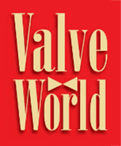Terminal hubs are industrial facilities dedicated to the storage of oil and/or petrochemical products, which are then usually transported to end users or further storage facilities. In his role as Vice President of Engineering at Summit Terminaling Services, LLC (Summit), a global terminaling consulting company and owner/operator of their own assets, Chris Commander specializes in providing entrepreneurial, practical and cost effective services to the midstream sector of the terminal and pipeline business. Valve World had the opportunity to speak with Chris, for a sneak peek into the world of terminaling operations.
“If it’s liquid, we can store it,” says Mr. Commander, who explains the challenges and the rewards of working in such a reactionary environment. There is no typical work day for Mr. Commander, and that is something that he likes.
While much of his day is spent in contract negotiation, overseeing project management and engineering tasks, and addressing project scopes, cost controls and job reviews, it is his hands-on approach (dedicating a large percentage of his time getting out to the field) that offers Mr. Commander a deeper sense of job satisfaction. As he puts it, there are simply times when a phone call doesn’t do the job.
Dedicated pipelines
According to Mr. Commander, product comes in via vessels, truck, rail or pipeline, be it crude or more refined materials, and goes out via other means. Whether it is diesel, gasoline or naphtha, exclusively chemicals or by-products, the terminal hub is designed and built to meet the product storage needs.
The benefits of terminaling
When asked why companies store their products with a terminaling company, as opposed to running in-house storage operations, Commander explains: “Two reasons. One, they simply don’t have the space. Two, it’s more cost effective for a terminaling company to operate tanks, as opposed to a different entity.” “It’s the same reason why a lot of these guys don’t run gas stations anymore. They used to. Then they realized if they can outsource the job, it’s more cost effective.
Valves for every function
In a large crude hub terminal, with a daily contractual rate in the barrels per hour that a crude facility may require to
output from the tank’s main lateral line, or “bloodline,” the issue of maintenance is of paramount importance. Commander points to three common valves that are commonly used for such large crude materials operation. “We are going to use a wedge gate, we are going to use a triple offset and we are going to use a double block and bleed. It is entirely dependent upon what the product is, what the budget is and what the need is. That being said, it’s not uncommon for us to use ball, gates, wedge, or butterfly as well. You name it, we use it.”
Valve maintenance and reliability
“For us the biggest issue, and again this relates back to being lean and mean, is reliability. It’s a big deal. Our facilities are 365 day, 24/7 operations. At the end of the day, we need to be reliable terminals.” explains Commander. Ideally, the goal is to have one specific valve with one valve manufacturer.
The key is to understanding what valve you want and how and when you want to utilize it; all the while taking into account cost considerations. “Maintenance guys don’t want twenty different valves. That may require your cost to go up because you’re married to one type of valve.” As Commander points out, flexibility is always key, and long-term maintenance needs may require larger investments in the short term.
Crude growth equals good news
For Commander, although the crude market is facing a major crunch, the future of terminaling, and the need for increased “shelf space” looks positive. In terms of the global market, the two largest growth areas are Asia and North America, something that would not have been the case years ago.
To read the complete article, please contact Roy van IJzendoorn for a PDF copy



